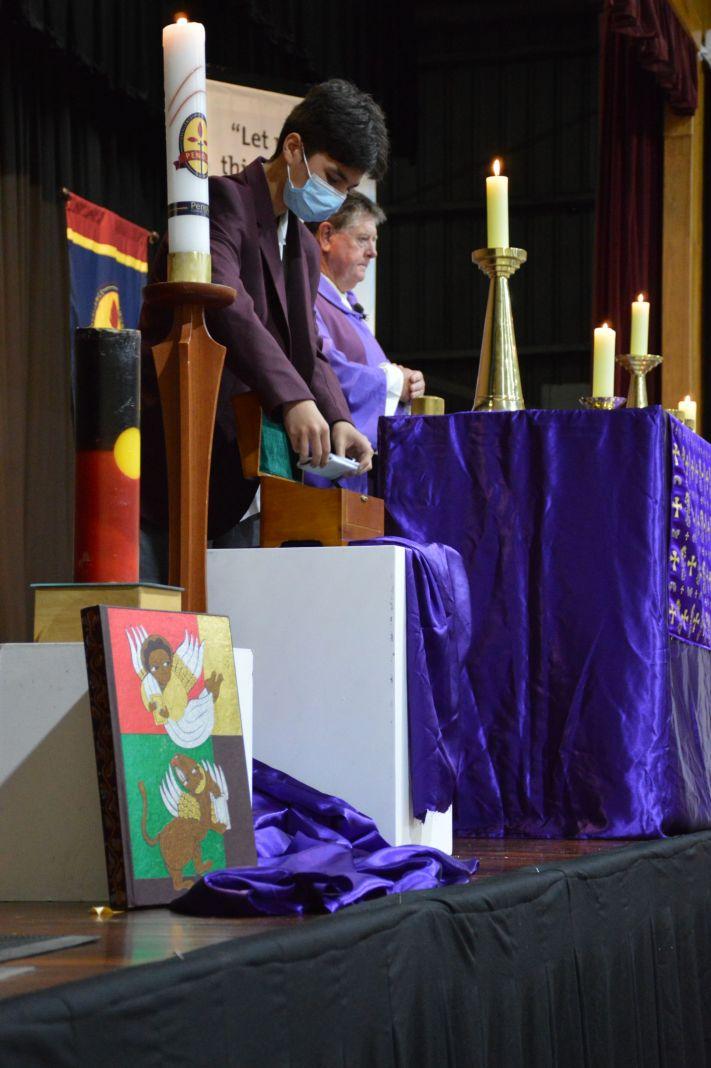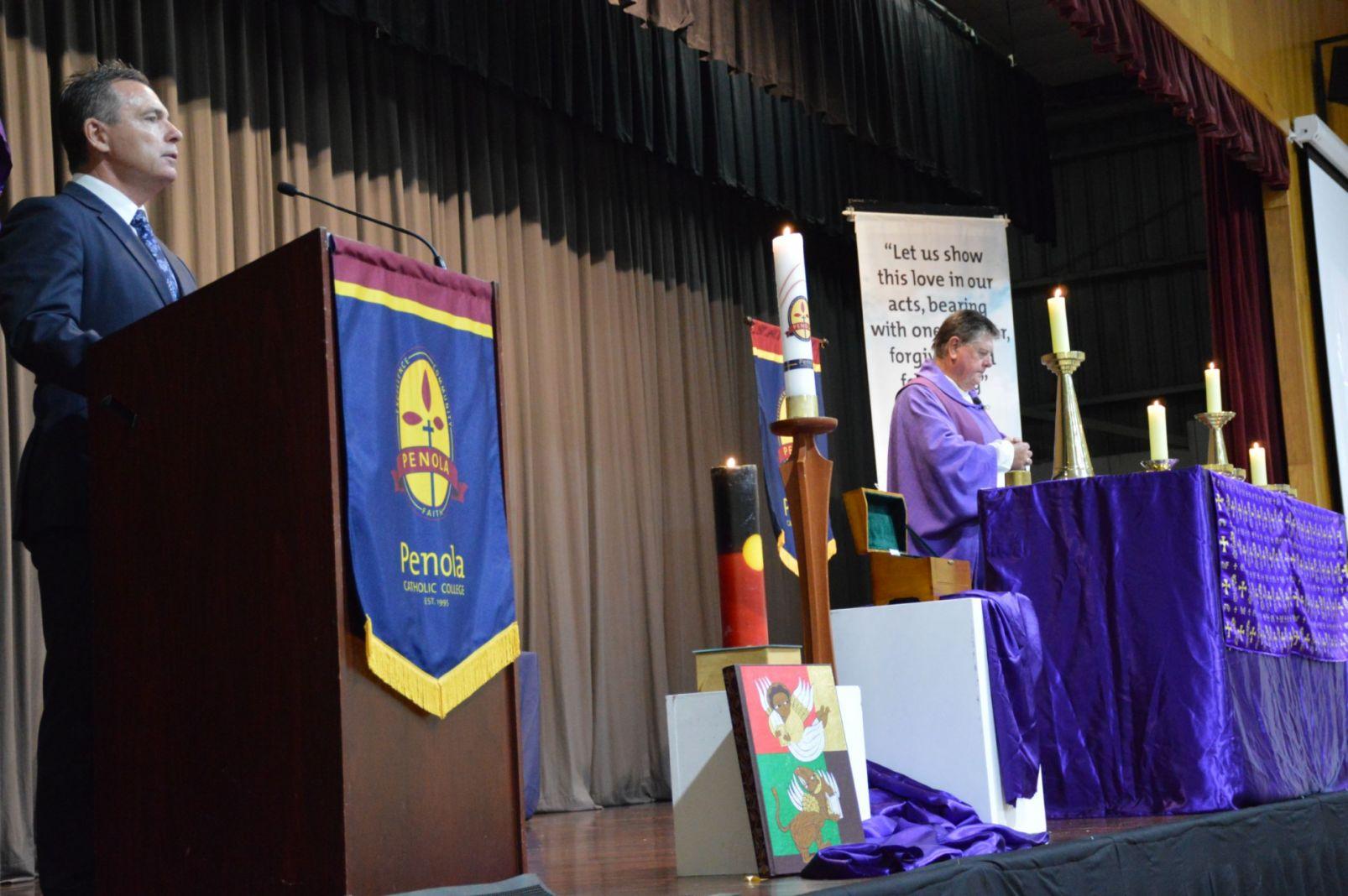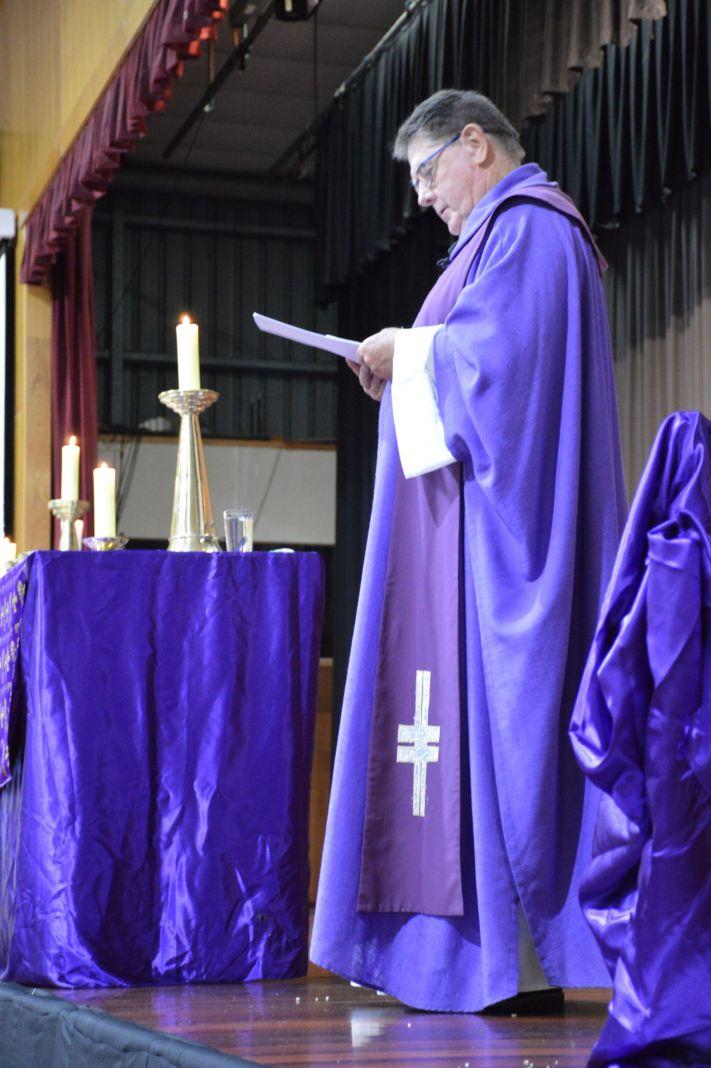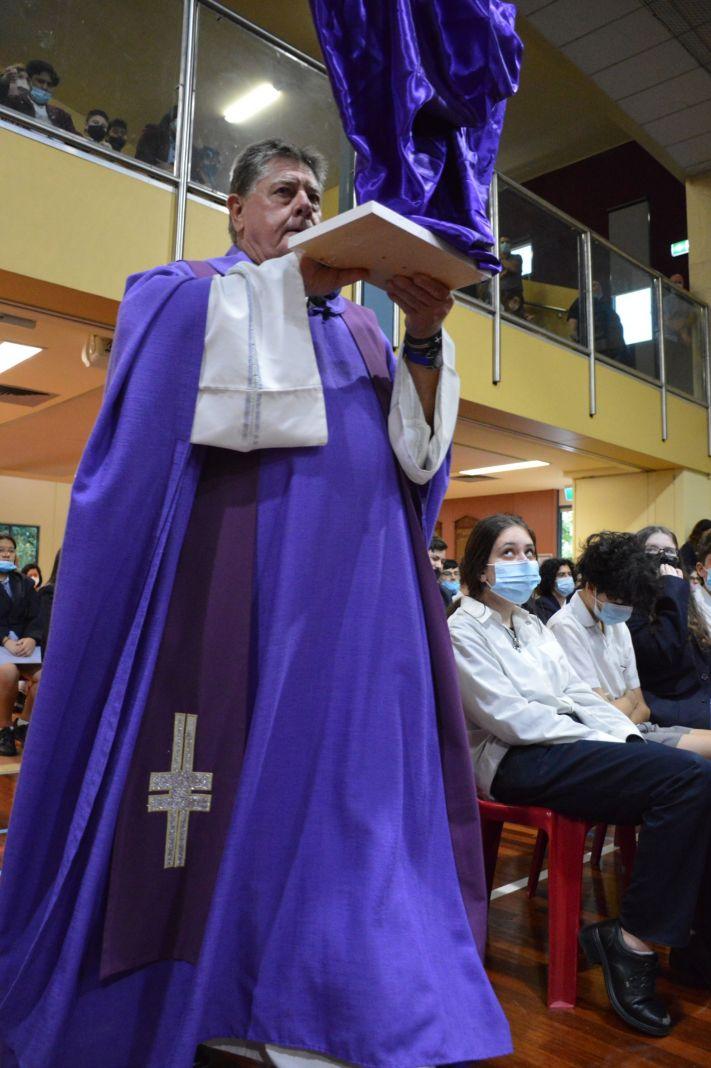Opening College and Ash Wednesday Mass, Wednesday, 2nd March
On Wednesday, we held our Opening College and Ash Wednesday Mass, celebrating both the start to our College year and also the commencement of Lent. Celebrating Mass together presents a real opportunity to express our faith as a Catholic community and commence our school year in a positive, connected manner. The Mass took place in the ASH at the Broadmeadows Campus with all students (Years 7-12) and staff present. It was wonderful to have everyone together again in one forum as a community. We also livestreamed the Mass to students, parents and staff to view from home. One beautiful ritual which took place during the Mass was to process and place all the names of our Year 7 students and the names of all other new students (Years 7-12) and staff to our College, into our Penola Catholic College Sacred Community Chest which sits upon the altar during all College Masses. Containing the names of every member of Penola Catholic College, it continues to symbolise for us that we are each significant, valued and connected members of both, our College community and our Lord’s family. Further, it reminds us as a College community to ensure we are inclusive of all and to always develop a spirit of belonging. It was a wonderful Mass, highlighted by the fact that this was the first time that many of our students had gathered together as a College community in its entirety, since starting at Penola. For the remainder, it was the first time in two years since we have done this. So the sense of gathering together as a community to celebrate Mass was made even more special.
Two articles from our College Chaplin, Fr Tony Cox
Father Tony has kindly written two articles which are very pertinent to us at present. One is connected to our College theme this year and the other on Lent. I urge you to read both articles and reflect upon his insights.
Loving in our Acts:
As we all know the Theme of the College for this year of 2022 is “Let us show this love in our acts, bearing with one another, forgiving and forgetting.”
In many ways it is a difficult theme, but I think it might be helpful at this stage to just tease the meaning out a bit. Seeing it was written by our Patron, St. Mary of the Cross MacKillop and viewed in the light of her treatment by the Church and her excommunication, it has tremendous meaning for us and our world at this time.
As we see and as we hear and read through the many media avenues, there is unfortunately so much conflict, misunderstanding, intolerance, scorn and harshness existing in so much of life and especially in relation to many countries and their relations with others.
In many ways, all of this would have been familiar to Jesus as he went about preaching and healing, welcoming the poor and the outcast. He said that we were to “Love our enemies and to do good to those who hate us”. In another part of the Gospels, he offered ways of acting whereby we could become blessed and happy.” It seems easier, doesn’t it, to seek to be poor in spirit rather than to love someone we dislike, someone we might call “the enemy”.
And yet, this is exactly what St. Mary of the Cross did. The love she showed and practised was a love which was gracious, which is an act of the will and not a feeling which is a determined interest in the welfare of the other. She put on the mind of Christ. Jesus proposed a love which could absorb and neutralise any anger which is in all hatred.
It is hard to judge justly when we are angry; hard to forgive when the wrong seems overwhelming; hard to lend and share what we have and what we are and to have no expectation of a pay-off. Yet as we give to others, God will give to us, not just an equal amount, but in abundance, piled into our lap until we carry no more.
This is Christian love. This is what Jesus urged upon his disciples and it is something that St. Mary of the Cross lived, dreamed and acted upon. She did not have to fall in love with those who opposed her, not feel the warm glow of affection which she might have had for friends, but even in the face of jealously and opposition she desired the ultimate well-being of those who ill-treated her.
To turn the other cheek, to submit to opposition and to desire the good of those criticising her would have seemed like madness, and a denial of the special place of God’s chosen people. Yet, this is what Jesus asked and this is what St. Mary of the Cross lived and acted out. She did good to those who opposed her. She showed meekness. She offered more than had been requested of her and she treated others as she would want them to treat her.
Mary never doubted God’s unwavering love, and in the end, she brought this love to all others.
Ash Wednesday - Lent Begins
We begin the Season of Lent with ashes on our foreheads and for many, a question is asked as to what is symbolised by this smudging? In some countries, the crowds going to Church to receive the ashes far exceeds those of even Christmas. A friend of mine who works as a priest in Mexico told me once of how they carve a cross out of a wine cork and then use this as a style of stamp…the numbers are so great!
Going back to when I was quite small my understanding had been that Lent mostly was seen as a season within which we are all asked to fast from certain normal, healthy pleasures so as to better ourselves for the feast of Easter. For myself, it was always a matter of trying to give up “lollies” for Lent and then having a “chocolate Easter egg breakout” on Easter Sunday. On top of this, my Birthday often fell on Good Friday and who wants to eat Fish and not be able to have chocolate and peppermint ice cream! But the meaning and significance is greater and deeper.
In every culture, there are ancient stories, myths, which teach that all of us, at times, have to sit in the ashes. We all know, for example, the story of Cinderella. The name itself literally means, the little girl (puella) who sits in the ashes (cinders). The moral of the story is clear: Before you get to be beautiful, before you get to marry the prince or princess, before you get to go to the great feast, you must first spend some lonely time in the ashes, humbled, smudged, tending to duty and the unglamorous, waiting. Lent is this. It is a time for each of us to sit in the ashes, to spend our time, like Cinderella, working and sitting among the cinders of the fire…grieving what we have done wrong, renouncing the dance, refraining from the banquet, refusing to do business as usual, waiting while some silent growth takes place within is, and simply being still so that the ashes can do their work in us enabling us to be with “the Lord of the Dance” on Easter Morning. It is not incidental that we begin Lent by marking our foreheads with ashes.

















